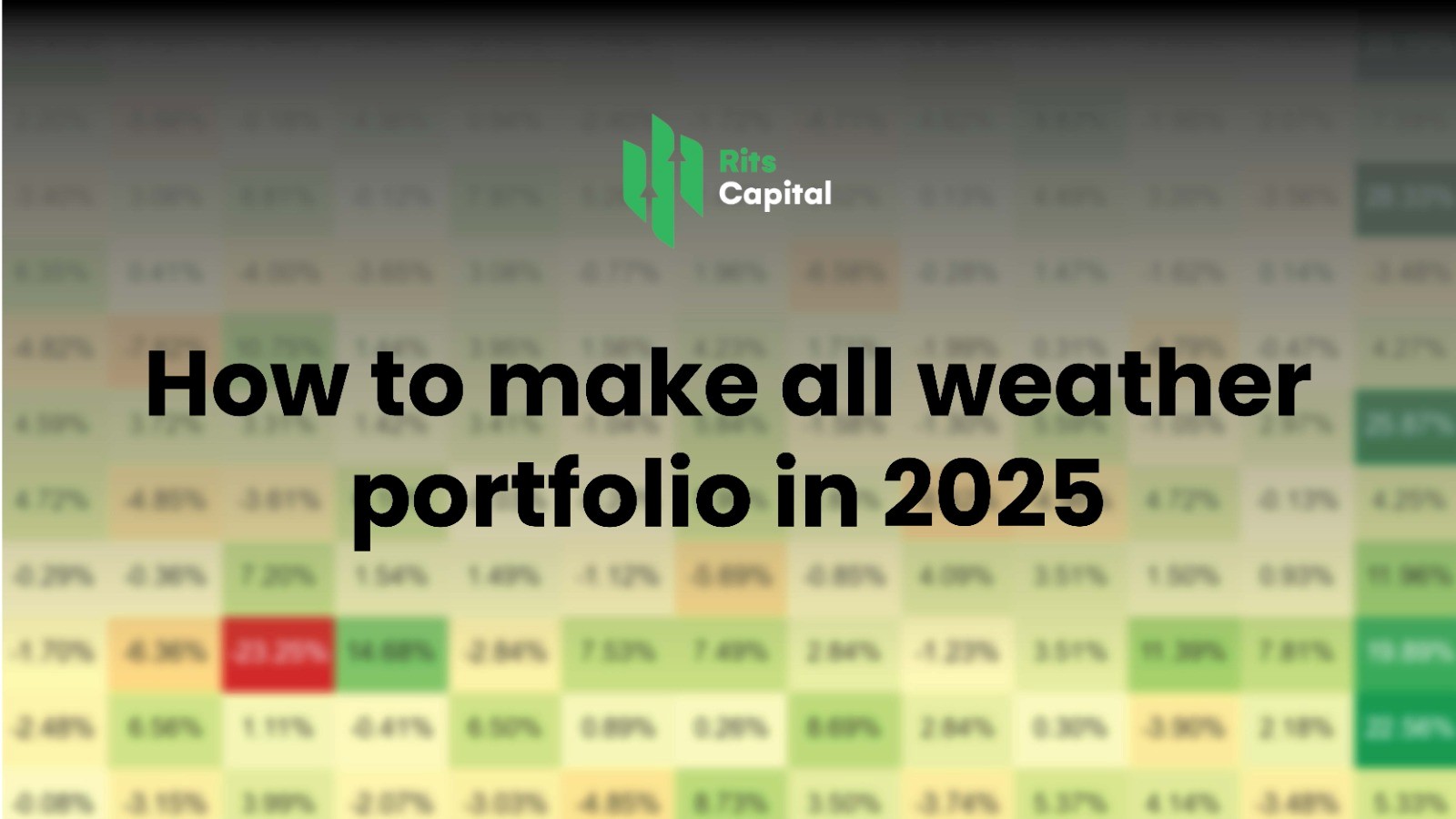Reflect on the 2020 market crash or the inflation spike in 2023 events that took investors by surprise and reshaped financial landscapes. These scenarios underscore the necessity of preparing for the unpredictable. The investment landscape in 2025 is dynamic and is shaped by various parameters, including market cycles, macro shocks, policy changes, and global risk factors. Building an all-weather portfolio means constructing a plan that balances growth with stability, so your investments thrive through booms, recessions, inflation spikes, and market corrections.
What is an All-Weather Portfolio?
An all-weather portfolio is a diversified investment portfolio specifically designed to provide growth and stability across different economic conditions, across various seasons. The core idea of the All-Weather Portfolio is to include assets that do well in rising growth, recession, high inflation, and deflation.
The idea of creating an All-Weather Portfolio comes from Ray Dalio when he was working with Bridgewater Associates. At its core is the concept of risk parity, where each asset contributes equally to the overall portfolio risk rather than having an equal capital allocation. Imagine allocating ‘₹1 lakh each’ versus ‘10% risk each’ to grasp how this principle differs. Today, this approach is adoptable by everyday investors in India and globally.
Key Principles for 2025-
Investors can follow these three principles for 2025:
– Diversification: Spread investments across asset classes to reduce risk and smooth returns.
– Risk Parity: Balance your exposure so no single asset dominates your portfolio’s risk profile.
– Discipline & Regular Rebalancing: Adjust your mix (annually or semi-annually) to maintain targets as markets shift.
Core asset classes you should follow:
In 2025, consider platforms and funds that provide easy access to a balanced mix of asset classes, guiding your investments across key categories with approximate allocation ranges:
a. Equities and Bonds: Allocate 40-50% to equities and bonds to harness high growth during economic upswings while maintaining stability through downturns and securing steady income streams.
b. Commodities: Assign 15-25% to commodities to Hedge against inflation and potential currency value loss.
c. Gold: Invest 5-10% in gold as it serves as a historic safe haven and an effective inflation hedge.
d. Cash and/ Liquid Funds: Keep 5-15% in cash or liquid funds to ensure quick liquidity during market stress.
e. Real Estate and REITs: Dedicate 10-20% to real estate or REITs for steady cash flow and inflation protection.
Building the Portfolio Step by Step
- Assess Your Needs-Define your time horizon, return objectives, tax situation, and risk tolerance.
- Allocate Across Growth, Stable, and Defensive Assets-
a. Growth: Equity mutual funds/ETFs.
b. Defensive: Bonds, gold, commodities.
c. Stable: Cash and Liquid funds.
- Rebalancing: Set a regular schedule to review your portfolio. Consider marking your calendar for rebalancing every January 15 and July 15 to develop a consistent habit. Rebalance by buying assets that have decreased in value and selling those that have surged. This practice enforces discipline, promoting the strategy of buying low and selling high.
4. Add Alternatives for Global Investments-Study and invest in alternative investments such as private debt, global funds ( USA, UK, UAE, and REITs). These can add diversification beyond traditional stocks and bonds and decrease dependence on a single stock.
What are the common mistakes to avoid when building an All-Weather portfolio?
- Overbuying stocks during bull runs.
- Neglecting regular rebalancing.
- Ignoring inflation risks.
- Emotional reactions to market swings.
Rits capital Tip for 2025:
- Use low-cost ETFs/mutual funds for easy asset allocation.
- Review Sector Trends-GST Reforms, news consumption, Patterns, and government incentives can affect certain sectors.
- Don’t chase performance; stick to your disciplined approach.
- Consult a Financial advisor.
Final Words:
An all-weather portfolio isn’t about predicting the next market move—it’s about preparing for anything. By balancing risk and reward across asset classes, maintaining discipline, and adapting to the Indian market’s evolving realities, you can build a portfolio that grows your wealth steadily through all market “seasons”.

